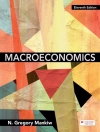Recent policies have replaced direct government funding for teaching with fees paid by students. As well as saddling graduates with enormous debt, satisfaction rates are low, a high proportion of graduates are in non-graduate jobs, and public debt from unpaid loans is rocketing.
This timely and challenging analysis combines theoretical and data analysis and insights gained from running a university, to give robust new policy proposals: lower fees; reintroduce maintenance awards; impose student number caps; maintain taxpayer funding; cancel the TEF; re-build the external examiner system; restructure the contingent-repayment loan scheme; and establish different roles for different types of institutions, to encourage excellence and ultimately benefit society.
Innehållsförteckning
Introduction
How Did We Get Here?
A Short Note On: The Case for Free Tuition and the Scottish Approach
Markets Without Competition
Stakeholders and Expenditures
Expanding Numbers and Maintaining Standards
A Short Note On: Setting up the OIA
Widening Participation and Student Finance
A Short Note On: The Open University
A Short Note On: The Case for Career Colleges: The US Model, by Lincoln E. Frank
Adjusting to the Future
Om författaren
Michael Naef is Reader in Economics at Royal Holloway. He works in experimental economics using weird and wonderful substances (testosterone, estrogen, sulpiride) to see what happens. He has published widely, including in Nature and the American Economic Review.












